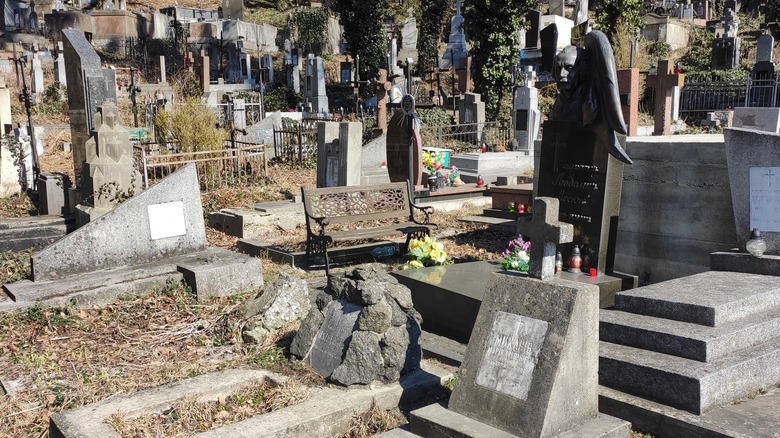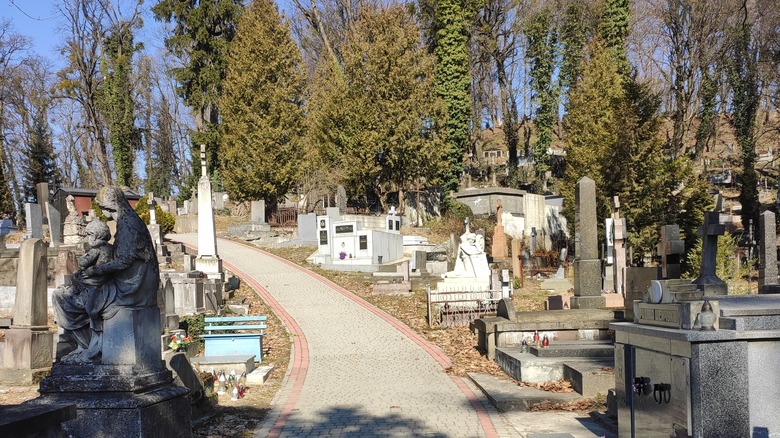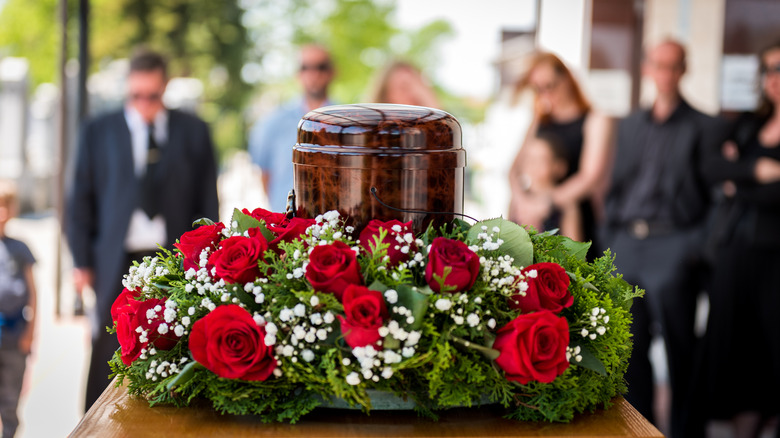What Happens If A Cemetery Runs Out Of Space?
The population of the Earth is increasing at a frightening rate. According to the United States Census Bureau, the population of Earth, as of this writing, stands just shy of 8 billion people. That is, by any measure, a dizzying number, representing perhaps the most pressing issue we'll face in the near future.
A macabre, tragic and inevitable issue that runs in tandem with this, of course, is that more people means more sad deaths. In 2012, the BBC reported that the Population Reference Bureau tackled the tricky topic of how many people have died in history. Using an estimate derived from more accurate modern data and approximations from further back in our long history, the bureau determined that around 107 billion people had existed up to that point.
With the growth of both our living and dead population, then, a crucial question arises: How will we respectfully dispose of the dead? Increasingly, cremation has become an option over simple burial — according to the Cremation Association of North America, in 2021 the United States had a 57.5% cremation rate; Canada's was 74.8%. Burial, however, continues to be a preferred method of disposing of the deceased for many. Will we continue to have space to bury everybody? Or will our cemeteries run out of space?
Overcrowded cemeteries are a growing problem
In some of the grimmer episodes of humanity's past, massive numbers of deaths resulted in mass graves. In cases such as these, space for graves wasn't exactly a concern. In 2007, for instance, National Geographic reported that an island in the Venetian Lagoon in Italy was discovered to be the site of such mass graves. The plague had been to blame. Some of the graves, which dated back to the worst outbreaks of the plague in the 1500s, were just great pits into which bodies were dumped. University Ca' Foscari of Venice archaeologist Vincenzo Gobbo explained, "about 500 people a day used to die in Lazzaretto Vecchio. Monatti [those who carried the plague victims' bodies away] simply had no time to take care of the burials."
The crucial thing, of course, is that the dead should be buried with the dignity, care and custom they deserve, however they or those closest to them would have chosen it. In practical terms, though, in societies which bury their dead, this takes up a lot of space.
Depending on their location, some of the world's cemeteries have the capacity to expand as needed, but many don't. It's becoming quite a crisis, too: In September of 2013, a BBC News survey concluded that half of the cemeteries in England were in danger of completely running out of space by 2033. It's a danger faced by the world at large, and certainly isn't an easy one to remedy.
Cremation, niches, and recycling graves
According to Science Focus, one approach to the problem of running out of space in a cemetery is simply to re-use that space. Very old graves, in effect, have newer dead people buried in them. The reasoning for this is that the long-dead person's grave will not likely be missed, and that money and space is saved.
As cemeteries approach capacity, other options are available. According to Cake in 2018, Arlington National Cemetery estimated that it would be full around the mid 2040s, if it continued to hold 7,000 new burials annually. This started a discussion about the need to be more specific about the veterans interred there, and the military suggested that Arlington be limited to "service members killed in action or awarded the military's highest decoration for heroism, the Medal of Honor."
Huffington Post reports that cremation is becoming much more popular, too. Around 40% of people in the United States are cremated on death, the outlet reported in 2014. Though this can save both money and cemetery space, there's an environmental cost to the process that must be considered, too — cremation produces a large amount of carbon dioxide, as well as trace elements that were present in the body. Science Focus adds that the concept of the niche is another space-saving method. This approach, popular in some European nations, sees the dead temporarily laid to rest in said niche, a tomb of sorts above the ground. When nature has taken its course on the body, it is then placed in a shared grave.


